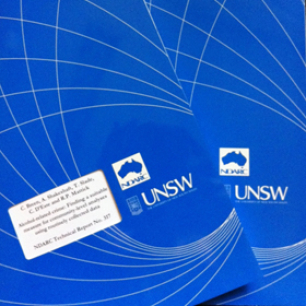NDARC Monograph No. 39 (1998)
EXECUTIVE SUMMARY
Recent research suggests that the prevalence and patterns of ecstasy use in Australia may be changing. Combined with reports of morbidity and mortality associated with the drug, this information has pointed to the need for a comprehensive examination of the patterns and context of ecstasy use in Australia, along with ecstasy-related harms, risk-taking behaviours, and the intervention preferences of this population. A structured interview schedule examining demographics, ecstasy use, other drug use, context of ecstasy use, ecstasy-related harms, risk-taking and intervention preferences was administered to a sample of 329 current ecstasy users recruited from three Australian states, NSW, Victoria and Queensland. The data provided both an overall picture of ecstasy use in Australia, as well as allowing preliminary comparisons between states in patterns of use and related harms.
Compared to an Australian sample of ecstasy users recruited in 1990, the present sample were younger, more diverse, and contained a higher proportion of females. Quantity and frequency of ecstasy use appears to have increased, as has polydrug use and the intravenous use of ecstasy. Participants were most likely to have used alcohol, tobacco, cannabis, LSD and amphetamine before trying ecstasy, and ketamine, MDA and cocaine since. Contrary to popular opinion, ecstasy was used in a wide variety of situations, rather than being exclusively a "dance drug". Ecstasy appears to have become a "mainstream" drug in Australia, used by a demographically diverse range of people in a variety of contexts, not all dance-oriented.
Participants had experienced an average of eight physical and four psychological side-effects from ecstasy in the preceding six months, including energy loss, muscular aches, hot and cold flushes, blurred vision, irritability, trouble sleeping, depression and confusion. Approximately 40% of the sample also reported financial, social and occupational problems related to their use of the drug. While unsafe injecting was uncommon, 41% of the sample consumed inadequate amounts of water while intoxicated, and 13% of those who attended dance venues danced continuously without rest periods. Participants readily identified ecstasy-related risks, yet 94% described their personal use as safe. One-fifth had received treatment for an ecstasy-related problem, most often from a GP or natural therapist, and 7% were currently in treatment. One quarter wanted to reduce their use, due to financial, relationship and psychological problems. Fifteen percent wanted formal treatment for an ecstasy problem, and 85% requested more information about the drug and methods of reducing the harms associated with its use.
Coinciding with changes, a wider range of users, higher quantity and frequency of use, intravenous use, and high rates of polydrug use, there has been an increase in ecstasy-related harms, including physical, psychological, financial, social and occupational problems. A substantial minority of users desire formal treatment for these problems. These results have important implications for the development of policy, including the provision of accurate and culturally acceptable information, and the development and evaluation of intervention programs designed specifically for this population.


